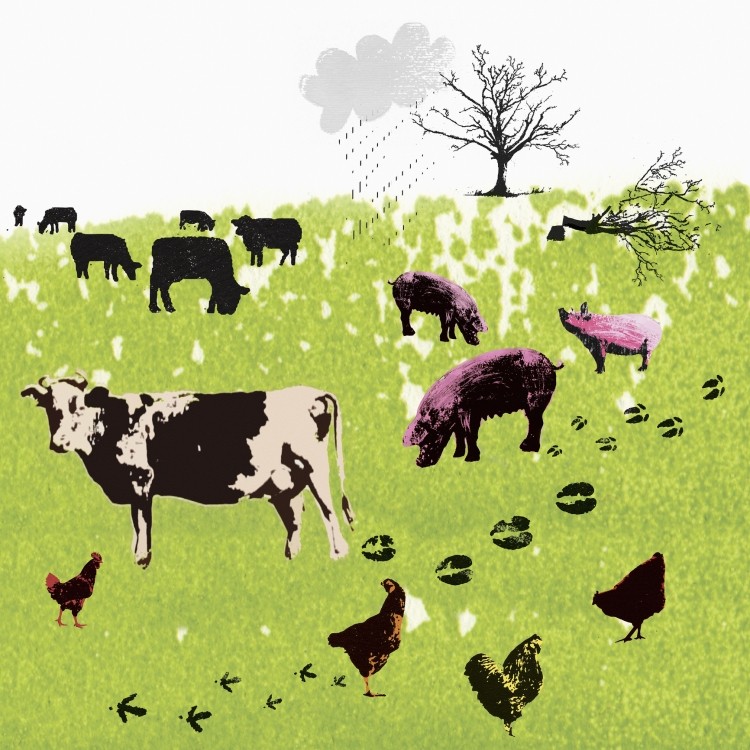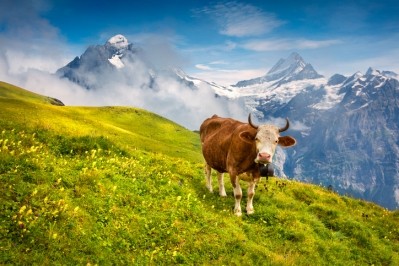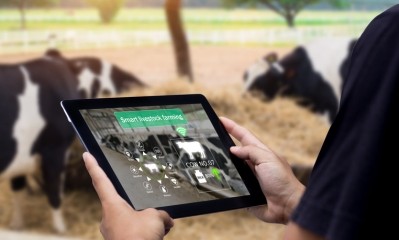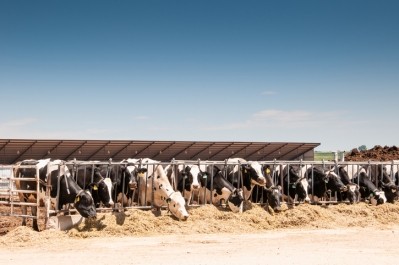Making ruminant farming part of the climate change solution

The company's first product, Mootral Ruminant, is a methane reduction product for dairy and beef cattle as well as sheep, which is based on a proprietary combination of organosulfur compounds from garlic and bioflavonoids extracted from citrus.
“We want to really be able to deliver a product that consistently works under different farming conditions, and we have seen, over the past two years, that the big beef and dairy companies are really looking for a very solid scientific foundation [in relation to additive mode of action and effectiveness].
"Even though we have gathered relevant scientific results and insights, our challenge, as a small, start-up company, is working to get this solid scientific basis, generating more peer reviewed papers and doing more in-vivo trials.
“The results of that research will influence the exact timing of launch, but we are saying that in the second half of 2019, we should be ready to go,” Vivica Pietz, marketing and communications, Mootral, told FeedNavigator.
Mootral’s goal is ultimately to make ruminant farming part of the climate change solution, she said.
Indeed, the Rolle based company has just received CHF 200,000 (US$198,940) from the Swiss Climate Foundation to help fund its efforts to protect the climate by reducing cattle’s methane emissions.
And, in April this year, the UK’s Carbon Trust certified the product’s capability, based on the 10 years of research behind the natural additive, to reduce dairy cattle enteric methane production by up to 38% following successful use.
That organization determined that the product is capable of reducing methane emissions in other ruminants such as sheep.
Livestock emissions are a considerable contributor to greenhouse gas emissions. To date, there had been much research in this field, but little availability in terms of commercial, scalable solutions to reduce methane emissions from cows.
Launch markets
Mootral has specific launch markets in mind, influenced by how much policymakers, governments and the public are engaged in the discussions on climate change, she said
“We see that Scandinavian countries are heavily focused on the Paris climate agreement goals, and we think that, in the UK, Brexit provides a good opportunity to launch a product like Mootral as the guidelines for its agricultural sector are going to be redefined. We also see a lot of support for the product in our home market, Switzerland.”
Killing bad bacteria
The extensive in-vitro, ex-vivo and in-vivo efficacy work done to date on Mootral Ruminant shows that the product manipulates rumen fermentation and reduces methanogenesis, said Bora Karamustafa, VP of sales and marketing for the Swiss start-up.
He said a UK dairy feed trial with Mootral Ruminant, undertaken last year, showed methane was reduced by an average of 30% while the milk yield was positively impacted.
Essentially, the product helps the cow digest by killing the bad bacteria and so, through that action, the animal subsequently has more energy to spend on producing what it needs to produce, with the output being quality milk, with more fatty acids and protein, said the company.
Background
Wales based, Neem Biotech, a sister company to Mootral, has been involved in the development of methane busting technology for the past 10 years.
Mootral, in fact, emerged out of the EU funded collaborative research project, SMEthane, an initiative started in 2010 by the UK’s Department of Food, Environment and Rural Affairs (DEFRA) that was aimed at progressing further knowledge on the successful use of nutritional additives to reduce methane (CH4) emissions from ruminants; SMEthane involved a range of pre-eminent scientists and universities.
“That was the first generation [of Mootral Ruminant], since then, there have been further upgrades, and the journey continues,” said Karamustafa.
The commercial and marketing team of Mootral was only established in 2016 in Rolle, as the momentum around tackling climate change really started to build, said Pietz.
Validation trials, business model
The past few years have been focusing on doing further scientific validation trials and developing the business model, looking at ways to create value and benefits for all stakeholders in the chain, as well as ensuring the appeal of the use of this product for consumers, she added.
“Our approach has been to trial under commercial conditions in the countries in which we would like to launch. We think a showcase or pilot project farm that has tested Mootral in situ can serve as an effective ambassador for the product in that market; as such, we are working on projects in Scandinavia, in Switzerland, and in the UK and Ireland,” said Pietz.
The company has a scientific advisory board involving global expertise and it is working with research institutes to continue to qualify the model, said Karamustafa.
Ultimately, it is trying to assess the effectiveness of the product in different farming conditions, such as a more grass-based production model, essentially seeing how Mootral works in a variety of diets, he added. “We have designed, for example, an extensive study In Ireland; we would expect to have some initial results from that trial at the end of this year, but it is a long-term study,”
The company has a lab scale production facility at Neem Biotech in Wales but no commercial factory, as of yet.
“We are still evaluating where would be the best location or locations for that.”
The idea eventually would be to set up local production sites, to ensure a lower carbon footprint for manufacturing of Mootral, he said.
Dosage
Mootral Ruminant comes in powder form, containing only garlic and citrus extracts. The recommended inclusion level is 10-15 grams a day per cow, depending on the breed, the weight and the DMI of the cow.
The product can be added to pellets at the feed mill, or to an on-farm mix.
“It is very flexible and this is why we also say that the product does not disrupt the existing feed regime. So far, we have not seen any negative interaction with other ingredients in the feed ration.”















